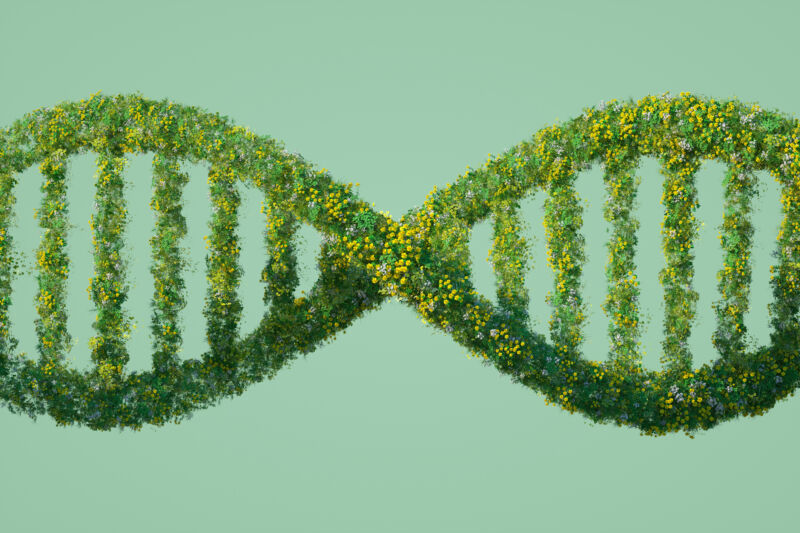
It used to be that if you wanted to find a DNA sequence in a particular sample, you had to go searching for that specific sequence—you had to fish it out with a hook designed especially to catch it. But no more. DNA sequencing technology has advanced to the point where you can take a sample from almost any environment—a drop of water, an ice core, a scoop of sand or soil, even air—and just see whatever DNA is in there.
This provides a non-invasive way to study wild populations and invasive or endangered species and has been used to monitor for pathogens (SARS-CoV-2, mpox, polio, tuberculosis) in wastewater. But guess who else’s DNA is in those environmental samples? Yup. Ours.
Something identifiable in the air
Liam Whitmore is a zoologist and conservationist who studies green turtles. He and his colleagues realized that having human DNA slip into research samples might be an issue, so they looked to see if they could find any in old water and sand samples they had taken as part of a wildlife and pathogen monitoring study. They did. Then they went intentionally searching for specific human sequences, and, in water, sand, and air samples, they found plenty of genomic regions that could identify a person’s ancestry and susceptibility to several diseases. They didn’t go so far as to identify individuals but noted that someone probably could compare these sequences to public genetic data without too much difficulty.
This is not the first time conservationists have had to contend with inadvertently collecting sensitive human data; mics and cameras set up to study wildlife can also record human voices and images. Data filtering can alleviate some of the privacy and consent concerns this raises, but things are stickier with DNA. So Whitmore and company very responsibly outlined some of the potential problems as well as some potential benefits of their findings, rather than leaving it up to policymakers and regulators and ethicists to sort it out later (i.e., too late).
The findings raise questions about best practices for these sorts of studies. In the US and the European Union, federally funded researchers intending to work with identifiable human DNA samples must first get approval from their institutional review board (which Whitmore did) and also get written informed consent from participants. But consent is impossible to obtain when the DNA is captured inadvertently in the environment.
Environmental DNA sequences are often deposited into public databases, as well. Since we now recognize that they contain human DNA, can/should this still be the case?
Beyond bureaucratic concerns, there are a host of malicious uses for this human genomic bycatch. Bad guys can use it for location tracking and surveillance of individuals or, perhaps more distressingly, target populations, without their knowledge or consent. Commercial appropriation of this tracking and surveillance data is almost the most benign application one can imagine for it. Wastewater monitoring for pathogens arrived with COVID-19, but the significant legal and privacy issues regarding its use have barely been addressed. Now that identifiable human DNA can be isolated from air, these issues really need to get hammered out.
Good and bad
But the DNA that we are constantly shedding and leaving all around us could also be used for good. That same pathogen monitoring could be correlated with human DNA that identifies susceptible populations, helping to protect them. Human genomic bycatch could be used to continually monitor for cancer-causing mutations, which arise and accumulate over a person’s lifetime. It could be used to add genetic information from underrepresented populations to genomic databases that still lack them or to find undiscovered sites of human habitation that archeologists have not yet uncovered. And environmental DNA samples could be used to find missing persons, both victims and suspects. Gaining these benefits while maintaining privacy will require a careful balancing act.
As Natalie Ram, a legal scholar who works at the intersection of law and genetic privacy, put it in an accompanying paper: “To be sure, solving crime is a good thing. But exploiting involuntarily shed genetic information for investigative aims risks putting all of us under perpetual genetic surveillance.” She highlighted that law enforcement has repeatedly demonstrated that they could not possibly be keener to use genetic information gathered for other purposes, like consumer genetic testing and even newborn screening (!!) and that, in the US at least, “most lower courts have held that individuals have no constitutional privacy rights in the DNA they unintentionally and inevitably shed as they move through the world.”
We know that we leave genetic material all over the world; that’s hardly news. But now anyone who has the desire and the means can collect and use or misuse it. This means that all of the thorny, complicated questions that arose with DNA sequencing technology have become even more pressing.
Nature Ecology & Evolution, 2023. DOI: 10.1038/s41559-023-02056-2, 10.1038/s41559-023-02072-2
https://arstechnica.com/?p=1939649

